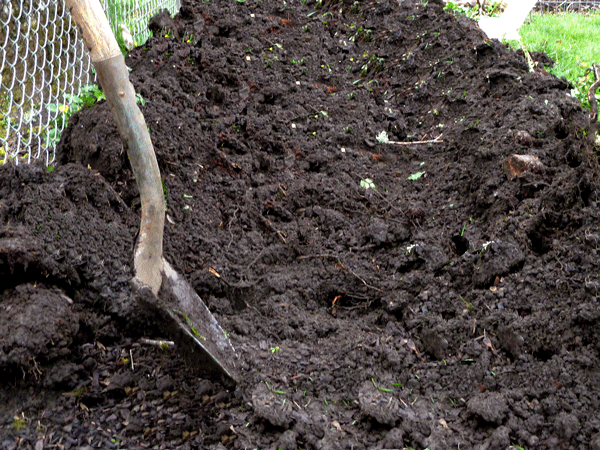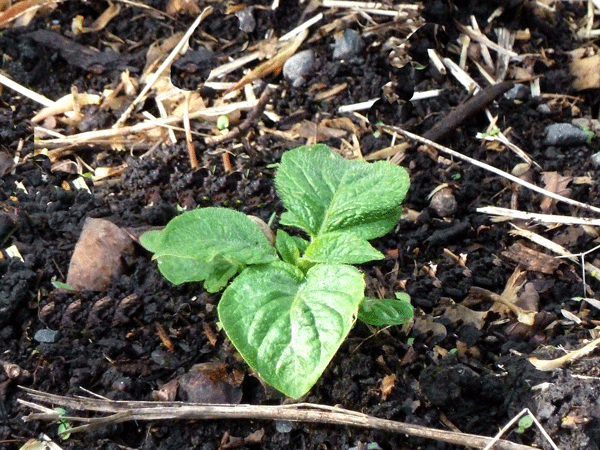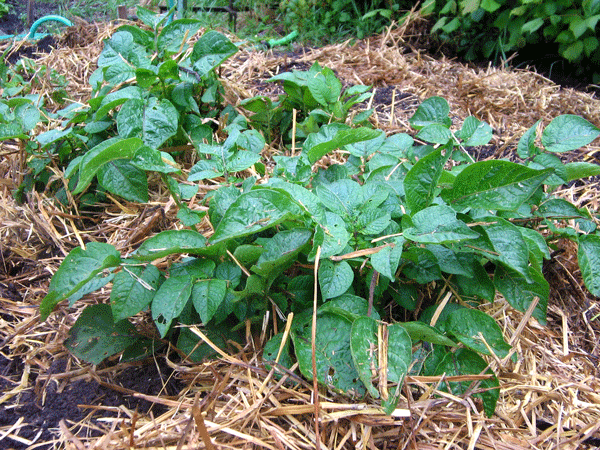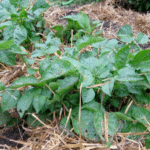St Patrick’s Day is usually my cue that potatoes need to be planted. You can still get your spuds in and have a decent harvest, but it needs to happen soon! Potatoes can be easily grown in something as simple as a bucket full of soil with drainage holes in the bottom. Although they are adaptable to lots of growing methods, the double-dig method has given me the highest yields.
 The method works by first digging a nice, long trench. Keep the soil you dig out somewhere handy, as you will need it later in the season to mound up your spuds. The second step is to dig a second, deeper trench in the one you have just cleared out. Don’t remove the soil in this deeper trench though. Instead you are just loosening the soil to give the potatoes an easy place to grow and multiply in the soil.
The method works by first digging a nice, long trench. Keep the soil you dig out somewhere handy, as you will need it later in the season to mound up your spuds. The second step is to dig a second, deeper trench in the one you have just cleared out. Don’t remove the soil in this deeper trench though. Instead you are just loosening the soil to give the potatoes an easy place to grow and multiply in the soil.
 Plant your spuds in this loosened soil anywhere from 1-2 feet apart. You can use seed potatoes from a garden store or grocery store-bought spuds. The seed potatoes will likely be well adapted to your climate and free of disease. These days I often use organic potatoes from my local market. They are grown nearby, so I know they will do well in my climate. Because they are organic, they should not have been sprayed with an anti-rooting agent.
Plant your spuds in this loosened soil anywhere from 1-2 feet apart. You can use seed potatoes from a garden store or grocery store-bought spuds. The seed potatoes will likely be well adapted to your climate and free of disease. These days I often use organic potatoes from my local market. They are grown nearby, so I know they will do well in my climate. Because they are organic, they should not have been sprayed with an anti-rooting agent.
What’s an anti-rooting agent? Surely you have grabbed a potato from the sack to cook and found it sprouting. Annoying, right? Non-organic farms will often spray potatoes with an anti-rooting agent to slow down the sprouting.
 As the potato greens grow, use the soil you removed to mound the trench little by little. Just leave at least 4 inches of greens showing. If you are battling weeds, you can dress the top lightly in mulch. Just don’t overdue it – you want the potatoes growing in soil, not mulch.
As the potato greens grow, use the soil you removed to mound the trench little by little. Just leave at least 4 inches of greens showing. If you are battling weeds, you can dress the top lightly in mulch. Just don’t overdue it – you want the potatoes growing in soil, not mulch.
 Around late summer or early fall, the greens will begin to die. That is your cue that the potatoes have multiplied as much as they will that season. Harvest them all at once or do what we do and just dig out what you need as you need them. We haven’t had issues with any going mushy on us since our soil drains well.
Around late summer or early fall, the greens will begin to die. That is your cue that the potatoes have multiplied as much as they will that season. Harvest them all at once or do what we do and just dig out what you need as you need them. We haven’t had issues with any going mushy on us since our soil drains well.
The other methods I have tried include growing potatoes in chicken wire (not a great yield), straw (mushy and some rotten spuds), and even recycled tires (great yield, but ugly in the garden and potential leeching issues). After several years of experimentation, the double-dig method has given me the best results. What has been working for your potato patch? Are your spuds already in the ground?





Although I till soil as little as possible I do make an exception for potatoes. I also dig the trench and loosen the soil in the bottom of the trench and hill soil around the potatoes as they grow as you described. Works very well.
Hi Tracey:
My best potato yields were from my gardens in Kansas City, Missouri.
I adapted the Ruth Stout Method of lazy gardening. I commuted to Texas
where I bought seed potatoes in January while it was still snowing on the ground in KCMO. On a sunny day, in late january or early February,
I spread cow munure on the frozen ground,laid out the whole small potates or cut nd cured potto pieces in the sevral rows, then covered
the whole area under a foot or more of old hay. I didn’t worry when more snow covred the lot. The spuds remained safe and warm under the hay blanket. Some time after Easter, the first green leaves would appear. One month aftwer that, there would be blossoms, and in another month the leaves would begin to turn yellow. I could then grub around for early potatoes. I began reaping whopping red or white potteoes as needed, and depending on how much I gave away, I’d have potates well into the fall.